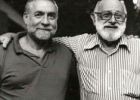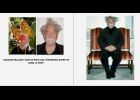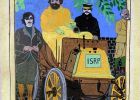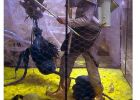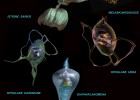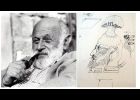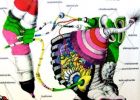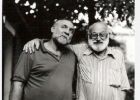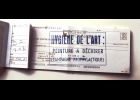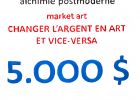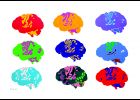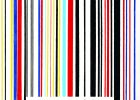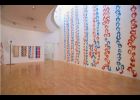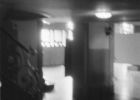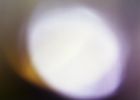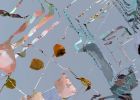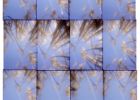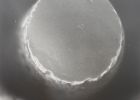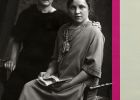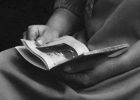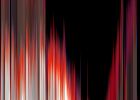Flusser Studies 31 – July 2021 / Special Issue - Flusser et la France
Chronologie: Vilém Flusser et la France / Bibliographie: Vilém Flusser en français
I. Hommage à Louis Bec
En hommage à Louis Bec (1936-2018)
Louis Bec, who died three years ago, was one of Flusser’s closest friends, one of the few with whom he never quarreled, and the only one with whom he co-authored a book. They met every Saturday to exchange their ideas. This essay discusses Bec’s life, his creation of the “Institut Scientifique de Recherche Paranaturaliste”, his work as a “zoosytematician” and his theories about bio-art and artificial life, some of his artistic installations, such as the Sulfanogrades, as well as their most important project, the Vampyroteuthis infernalis. Their friendly and intellectual complicity lasted seventeen years: it is difficult to imagine what Flusser would have been without Bec, or Bec without Flusser.
Bec’s Sulfanograde / Os sulfanogrados de Louis Bec / Les Sulfanogrades de Louis Bec
The essay starts out with the notion of simulation. Scientific observation works by simulating phenomena, that is, by creating models of “reality”. Within this horizon, it is difficult to tell “true” and “false” apart. Furthermore, it is no longer possible to maintain the difference between art and science. As simulated organisms that position themselves beyond the divide of art and science, Bec´s Sulfanogrades are an example of this new understanding.
Orthonature Paranature de Vilém Flusser / Vilém Flusser’s Orthonature Paranature
Orthonature and Paranature
Orthonature Paranature is Flusser's third book in French, after La Force du Quotidien in 1973 and Le Monde codifié in 1974, and the last published in France during his lifetime. It was published in February 1978 by the Institut Scientifique de Recherche Paranaturaliste (ISRP; Scientific Institute for Paranaturalist Research), which was headquartered at the home of Louis Bec. The ten-page pamphlet for Orthonature Paranature reproduces the text of a lecture given by Flusser on October 9, 1976 on the occasion of Louis Bec’s exhibition Les Sulfanogrades, which were described as artificial organisms living in a hostile sulfur biome. Orthonature Paranature is framed by other Flusser texts and projects, including the cross-disciplinary roundtable Technologie et imaginaire (1975) – which presaged future French projects like Les Immatériaux (1985), the landmark exhibition at the Centre Pompidou organized by Jean-François Lyotard and Thierry Chaput – and Natural:Mind (1979). In Orthonature Paranature, Flusser argues that, rather than culture existing as the transformation of nature, the opposite is often true. Flusser defines “orthonature” as the commonly understood version of nature as universal and omnipresent, preexisting culture, and “paranature” as multiple: all the natures and cultures reduced to epistemological categories in order to make them understandable and manipulable. Orthonature Paranature clearly laid the ground for Flusser and Bec’s collaborative opus, Vampyroteuthis infernalis, which is often described as a work of “parabiology,” and Flusser’s “Curie’s Children” (1986-1992) column in Artforum. In this sense, Orthonature Paranature serves as a small but potent experiment around which Flusser’s ideas of nature, art, science, and philosophy hinged, and which would be elaborated upon in his writings until his death.
Vampyroteuthis Infernalis, le podcast comme format de recherche-création
For this special issue of Flusser Studies on Vilém Flusser's relations with France, I would like to propose a research-creation format, which is embodied in a podcast that is part of the Bio Is The New Black series. The podcast is a creation based on reading the Vampyroteuthis Infernalis and research conducted at the Vilém Flusser Archive in Berlin under the supervision of Anita Jóri. Bio Is The New Black is a podcast around design, biology and technology that invites artists, designers, philosophers, scientists and engineers to explore the multiple ethical, critical and creative questions that arise with bio-manufacturing technologies.
II. D’autres amis français de Vilém Flusser
Une conversation / Letters: Hervé Fischer - Vilém Flusser 1976 - 1982
This very personal bilingual interview with Hervé Fischer is preceded by a short e-mail exchange that sets the tone. It deals with Fischer’s personal relationship to Edith and Vilém Flusser, their first meeting, multilingualism, writing in French, the São Paolo Biennale, Flusser’s relationship to Alexandre Bonnier and Jeanne Gatard, Art Sociologique but also the future of Flusser’s legacy.
Interview
In this interview, Fred Forest, Jean-Louis Poitevin and Martial Verdier, discuss the relationship between Fred Forest and Vilém Flusser, their collaboration over the years and the influence they had on each other’s work and thinking. Verdier was at one time Forest’s assistant; he is now Secrétaire Général of TK21 and has recorded and edited the discussion. The interview begins with their first meeting between Forest and Flusser and the person of Flusser himself. It then moves on to a major field of collaboration: gestures (ca. 4.38) and the role of dialogue and intersubjectivity (ca. 5.55). They also discuss the notion of apparatus (ca. 9.00), video (ca. 17.25) and the group “Art Scociologique” (ca. 20.25 and again ca. 37.40). Forest talks about the dissolution of the group and about one of his members Hervé Fischer (ca. 38.30) (see the interview with Fischer in this issue). Verdier questions Forest about Flusser’s impact on his work and the way he himself influenced Flusser’s thinking (ca. 29.30). The very last question concerns the future of art. The situation today, Forest says, is tragic, but there is also hope for “a return to more honest, profound and valuable” things.
Password: Flusser
Vilém Flusser et Abraham Moles: le fond et la forme d’une « affinité combative »
The central role that Abraham Moles played in Vilém Flusser's thought during the first years after his return to Europe in 1972 is indisputable. Certain personal coincidences are striking: they were born in the same year 1920, and they died six months apart (respectively in November 1991 and in May 1992). From a theoretical point of view, the affinities between the two friends are also remarkable: if the interest in the phenomenon of cybernetics connected them, it is the aesthetics of communication open to phenomenology that allowed them a fruitful exchange.
But there is a third element, more formal and less known: their paradoxical Jewishness. The reference to the Golem myth, which appears as the background of their cybernetic thoughts, seems to refer to the Judaic substratum that animated their method of study involving heated discussions.
Thus, after some biographical data, these three elements provide the general outline of the article: the cybernetic approach, the phenomenological method, and the Talmudic practice. The goal is to show how the relationship between Vilém Flusser and Abraham Moles shows that, beyond intellectual gestures, in which they sought, in a perpetual effort, to regroup (the law of “elective affinities”), real “combative affinities” remain, resisting the entropy of the world and eternal oblivion.
III. Flusser en France
Premier discours, premier article et première interview de Flusser en français : au sujet de la 12e Biennale de São Paulo
Présentation de Vilém Flusser à l'assemblée générale de l'AICA le 13 septembre 1972
Thèmes révolutionnaires pour la Biennale de São-Paulo 1973 / Revolutionary themes for the São Paulo Biennale 1973
Interview: La Biennale de São Paulo transformée en laboratoire collectif
Les Rendez-vous manqués. Flusser, la France et la photographie
Flusser was based in France for the last sixteen years of his life. He spoke reasonably good French, but he published very little in France, either books or articles, gave few conferences or lectures, and never became part of French intellectual circles. While some of it may be due to his modest knowledge of French and to his living in a small southern village far away from Paris, the main reason is probably that he was an outsider, not a member of academia and not a thinker who could nicely fit in the “French Theory” dogma. Even after his death he did not attract much interest in French intellectual circles until recently. This essay analyzes this “missed encounter” principally from the viewpoint of photography; it notes however that interest in his concepts has been growing in France for several years, goes on to suggest ways to cultivate and extend this trend.
L'échec des Rencontres de Robion (1981/82) : Un tournant pour Vilém Flusser? / The Failure of the 1981/82 Robion Encounters: A Turning Point for Vilém Flusser?
Settling in Robion in 1981, Flusser attempted to organize a summer event there, as a sort of laboratory of ideas related to the São Paulo Biennale. There was only one event, in August 1981, on the subject of analogies to language. This failure can be seen as a turning point for Flusser as far as his relationship with Brazil and with France were concerned: after 1982, the center of gravity of his intellectual and editorial life moved to Germany.
IV. Publier en France
Flusser, La Force du Quotidien, Mame, 1973. Histoire d’une édition et d’une occasion manquée
This essay tells the story of Vilém Flusser’s first French publication, La Force du Quotidien, published in 1973 by the editor Mame. It is a collection of short phenomenological essays examining everyday objects such as mirrors, books, cars and beds.
Interview
This is a short interview with Claude Lutz, the founder and director of Édition Circé, which in 1996 published a French translation of Vilém Flusser’s Für eine Philosophie der Fotografie. Three more translations followed: Petite philosophie du design (2002), Essais sur la nature et la culture (2005) and La Civilisation des médias (2006).
Parution en français de Mutations dans les Relations Humaines? De la Communicologie
The forthcoming publication of the French typescript (written 1986) of Flusser’s book Communicology constitutes an important step in the program of French publications of Flusser’s works. Until now known only in its 1996 German version as Kommunikologie. Umbruch der Menschlichen Beziehungen? (the English typescript has not yet been published), the French title reverses the order of title and subtitle: Mutations dans les Relations Humaines ? De la Communicologie.
The publisher, Marc Partouche, worked with Flusser and Louis Bec on several projects in the 80s, among them the exhibition Le vivant et l’artificiel in Avignon in 1984. While Flusser was alive, Partouche published a few of Flusser’s essays in various journals and Flusser gave him several French typescripts, asking him to prepare them for publication.
In this book, Flusser pursues and deepens his pioneering thinking on media, and artificial intelligence, reflections already present in his previous works, making it one of his most important and visionary writings.
Le diable, l’absurde et la philosophie / Extrait de L'Histoire du diable de Vilém Flusser: « La conversation »
This essay, a short introduction to the French translation of Vilém Flussers The History of the Devil, deals with some of the main aspects of the book, including the notion of sin and the figure of the devil, but also the dangers of nationalism, Marxism, the theoretical shortcomings of existentialism and Flusser’s interest in Buddhism. The accompanying extract from The History of the Devil, paragraph 6.4. Conversation, which is the last part of chapter 6. Envy and Greed, focuses on the notion of conversation, which is absolutely central to Flusser’s thinking. Its future ramifications extend to the concept of dialogue and go as far as the telematic society.
Dans l’univers des images techniques – en VF
Although a growing number of Vilém Flusser’s texts have been made available in France, where he spent the last part of his life, the decisive book Ins Universum der technischen Bilder, from 1985, is still missing. Written two years after Für eine Philosophie der Fotografie, his most influential book -- translated into French in 1996, Ins Universum der technischen Bilder is arguably one of Flusser’s theoretically most ambitious books. It aims to describe the entire history of visualization techniques. Both foreshadowing the development of digitization processes to come and harking back to the earliest moments of civilization, this book will make the full potential of the thought-provoking ideas already available in French more readily understandable than they were at the time of their publication. This French translation by Pierre Rusch will facilitate a new understanding of this crucial phase in Flusser’s oeuvre, where the insights into the automated character of the photographic images are taken to the level of a phenomenology of technical gestures, with “abstracting” and “concretizing” as their key operations.
V. Au sujet de Flusser
Appareil et caméras chez Vilém Flusser, objections et critique
For Vilém Flusser, apparatus is a term of primary importance. Key to the post-historical age, it tends to designate a programmed functioning within which the players or functionaries, that we will be from now on, are activated. The problem is to define such a notion, Flusser relies on a questionable conception of photography and of the “photographable.” The point of this paper is not to consider, as Flusser puts it, what can be “left for us,” but to consider more optimistically what can be done “with” the new recording devices. Considering that history is not finished, we will propose, following the suggestions of Walter Benjamin, to think of technique as open to a less regulated, freer and potentially more critical understanding.
Vilém Flusser et la recherche-création
This paper highlights some of the parallels and resonance effects that can be observed between the way Flusser advocated dealing with the “art crisis” and the way some institutions conceive and justify their “research-creation” programs today. Seen in this way, Flusser appears to have already been calling for a way of enhancing both research and creativity a half a century ago. We have yet to understand the epistemic, aesthetic and political implications of the specific method of interrogation he proposed (the Pilpul).
Flusser and French Theory
Flusser lived in France for roughly the last decade and a half of his life, but he often minimized the influence of French philosophy (or “theory”) on his writing. I would argue, however, that the impact and reception of Flusser’s work relies largely on the avenues opened up by French theory, and that French theory provided a fruitful “model” – one of Flusser’s favorite terms – for his own visionary thinking. Flusser was first celebrated in Germany, where Friedrich Kittler, the most prominent media theorist of his era, embraced his technical image writings. Kittler was informed by recent French theory: Foucault, Lacan, and Derrida. In the U.S., Flusser’s reception was through two avenues, both heavily influenced by French theory: photography theory within art history, and the U.S. art world. This paper traces some of these connections, comparing Flusser to contemporary peers and thinkers like Roland Barthes, Jean Baudrillard, Gilles Deleuze, Michel Foucault, Jean-François Lyotard, Paul Virilio, Guy Debord, and François Laruelle.
Aveuglement théorique et insouciance éthique : Sur quelques faiblesses congénitales chez les sectateurs français de l'image... photographique en particulier
In a rather personal and somewhat polemical essay titled “Theoretical blindness and ethical recklessness / On some congenital weaknesses among French cultists of the image ... the photographic image in particular”, the philosopher Jean-Louis Poitevin points out the indifference of the great majority of French theoreticians, historians and critics of photography and images toward Flusser’s thinking. He outlines the essentialist approach of most French theoreticians of the image, following Barthes (and, before him, Sartre), as one centered on the index, on the real, on the absence / presence concept. It neglects the multipolar approach of thinkers like Vilém Flusser, who, instead of focusing on the narrow subject itself, took a wider approach, including history, anthropology, and philosophy: Flusser analyzed the parameters of production and diffusion of images. As part of an historical framework, he developed the concept of technical images, emphasising the social and political place of photographers within the apparatus. He also investigated the dialectics between text and images. Flusser’s concepts go against the grain of the dominant French thinking on images and photography, and his thinking undermines the traditional French dogma in this domain. He represented a danger for this dogma, and because of that, he has been kept in obscurity and ostracized, and is still relatively unknown in France.
Pour un design radicalement circulaire. À propos des « Considérations écologiques » de Vilém Flusser
In his “Ecological Considerations”, an unpublished article written in French in 1984-1985, Vilém Flusser shows the limitations of a sharp opposition between nature and culture, and supports the provocative hypothesis of a naturalization of technology, which takes the form of a circular production. The notions of object and waste become the poles of a critique of consumption, which Flusser links to the development of digital programs and information theories. Examining this text, at a distance of nearly forty years, allows us to take a step back from the debates and controversies relating to the field of eco-design. It shows that a radically circular design would not change production and not even consumption, but the very definition of design.
VI. Des photographes
Bernard Plossu: Die Wissenschaft des Ungenauen / Bernard Plossu: The Science of the Imprecise / Bernard Plossu: La science de l’imprécis
Between 1983 and his death in 1991, Flusser wrote thirteen articles for the magazine European Photography under the title “Reflections”. These were written by Flusser in German and English, and then edited by Derek Bennett. Among the photographers whose work appears in these articles, only one -- Bernard Plossu (b. 1945) -- is French. Flusser did not meet Plossu, but had the catalogue of Plossu’s exhibition “Intermediate Landscapes” (Centre Pompidou, 1988) in his library. The article was written in the same year as the author’s death.
This essay focuses on sharpness and blur, proximity and distance, and uses a photograph by Bernard Plossu to explore Abraham Moles' theories of imprecision. It was illustrated with four photographs by Bernard Plossu.
French Photographers
For a Philosophy of Photography is undoubtedly Flusser’s best-known book in France. For his research, Marc Lenot had met many experimental photographers in the Flusserian sense of the term, and found out that, while a few were already familiar with this book, many discovered Flusser’s thinking only in the course of the ensuing discussions. Therefore, he asked about fifteen photographers from the French scene who he considers experimental to say in a few words how Flusser had been important to them. Eight responded, usually the youngest. Juliana Borinski was especially sensitive to her dimension as a cosmopolitan migrant. Driss Aroussi, Isabelle Le Minh and Lionel Bayol-Thémines had known Flusser for a long time, and were often inspired by him. Mustapha Azeroual and Laure Tiberghien discovered an echo of their work in his writings. Jean-Baptiste Perrot recounts the revelation that the discovery of his thoughts was for him. Finally, Denis Bernard, starting out from a picture of Flusser himself, focuses on the gesture of the photographer and questions the epistemological status of the image. Each of them chose an example of their work to accompany the written statement.
